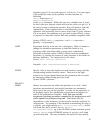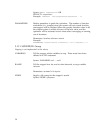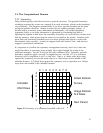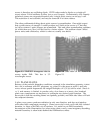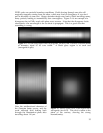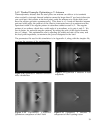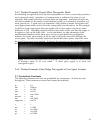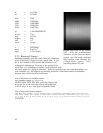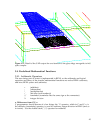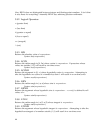3.6. Optimization
There are powerful techniques for finding the minimum of smooth functions in a few
function evaluations, an important consideration when the merit function requires
minutes to hours for each iteration. There are robust techniques for finding the minimum
of functions that are noisy, discontinuous, or otherwise badly behaved, which our
simulation results tend to be. There are intelligent techniques that have a good prospect
of finding a global minimum of a function whose geometry is poorly known, which ours
usually are. Unfortunately for us, the intersection of those three groups is the null set.
Because 3-D electromagnetic simulations tend to be slow, noisy, and to produce merit
function values full of multidimensional cliffs and canyons, we have to be realistic about
what optimization can give us. Given reasonable computing resources and time to run,
POEMS will take your initial guess and improve it automatically. It will explore the
immediate neighbourhood, and if after a couple of restarts it converges back to the same
place, you can be reasonably sure that there isn’t a significantly better design in the
immediate vicinity. If you run out of time and have to stop it somewhere, the best point
in the current simplex is always the best point evaluated so far.
The POEMS optimizer is more like an automatic design-of-experiments machine than an
elegant numerical thoroughbred, but it is a reasonable choice for the problem at hand.
Work is underway to find a better one, with emphasis on response-surface optimizers,
where the merit function values go into a statistically-fitted parameterized surface, and
the minimum of that surface is used as the next guess. Pruning the set of points used
and choosing the right class of surfaces are the tricky parts.
The Nelder-Mead downhill simplex method does not always converge to the minimum,
even of smooth functions. When this happens, the reason is that the simplex has closed
up on itself in some dimension, so that its hypervolume becomes anomalously small and
the search space becomes defective. For this reason, once it has converged, it’s usually a
good idea to restart it using the best point and a few random values. The POEMS
optimizer does this if requested. On average, Nelder-Mead seems to be the most efficient
direct-search algorithm available for the problem at hand—its occasional failure to
converge without restarting is more than balanced by its use of only 1 or 2 function
evaluations per step (except for shrink steps).
3.6.1. Merit Functions
In order for this to do anything useful, you have to specify a merit function (or penalty
function for pessimists) that depends on the simulation output. POEMS provides enough
flexibility to optimize nearly anything technologically relevant, except that it has no direct
support for nonlinear optics (which it may in the future). A few examples are useful.
a. Waveguide Loss Loss in a waveguide device can be calculated from the flux integrals
in the input and output planes:
POSTPROCESS
...
37



